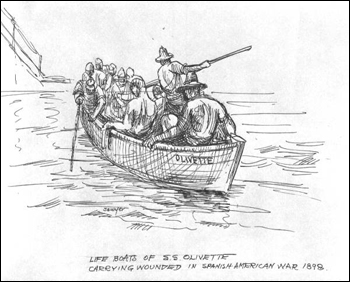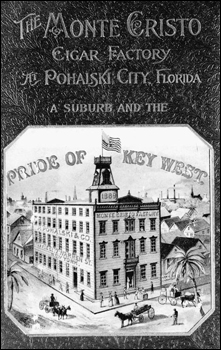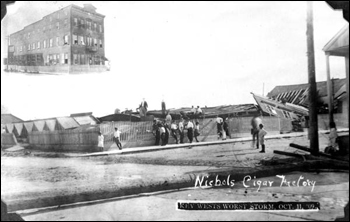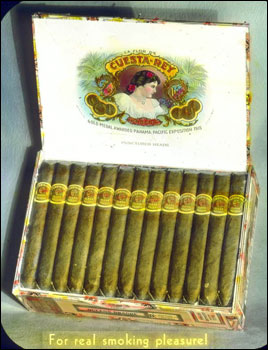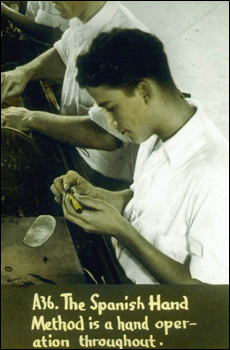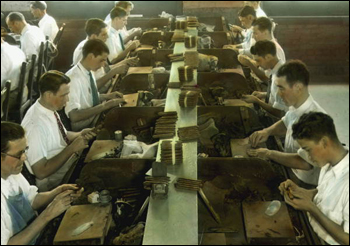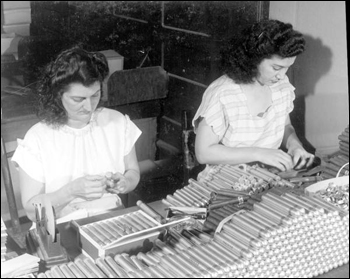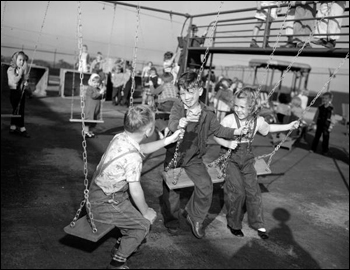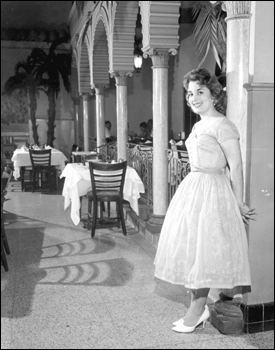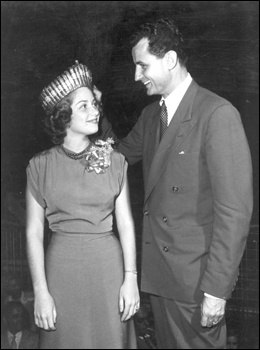Photo Exhibits
Photo exhibits spotlight various topics in Florida history, and are accompanied by brief text intended to place selected materials in historical context.
Florida Cigars
Artistry, Labor, and Politics in Florida's Oldest Industry
"Olivette" life boat carrying wounded in Spanish-American War, 1898, drawn by Philip Ayers Sawyer
Image Number: N047356
The "Olivette" was built in 1886 at Philadelphia, Pennsylvania by William Cramp and Sons for Henry B. Plant. It was launched on February 16, 1887 and its maiden voyage was on April 19th.
It was built for the Tampa, Key West, Havana run in the winter and the Boston to Bar Harbor, Maine in the Summer and Fall. It brought tobacco out of Cuba for Tampa cigar factories just prior to an embargo. The Olivette brought the survivors of the "Maine" back to the United States. She helped evacuate American citizens from Cuba. It overturned while taking on coal, was raised and repaired. She returned to the Tampa-Havana run in 1899. In January 1918, coming into Havana fog, she stranded on a rock off Coljima Beach. No lives were lost but she was a total loss.
Monte Cristo cigar factory (18--)
Image Number: PR04946
Wreckage of Nichols Cigar Factory after the hurricane: Key West, Florida (1909)
Image Number: N041465
Spanish American War and Florida's Cigar Workers
Social and patriotic clubs, first in Key West then in Ybor City and West Tampa, played a central part in the vibrant culture and political life of the new Florida communities' cigar workers and many cigar workers attended cafes and clubs nightly to play dominoes, socialize, and discuss politics. The clubs were also an important source of fundraising and political support for the Cuban revolutionary movement. Florida's Cuban immigrants were strong supporters as well of their adopted country's involvement in the Spanish-American War. Cuban Americans from every social and economic level supported the cause of Cuban independence and everyone from wealthy, individual cigar manufacturers to socialist worker organizers and social clubs donated thousands of dollars. Revolutionary leader Jose Marti toured Ybor City, West Tampa, and Key West delivering speeches to large crowds in festival-like atmospheres wherever he went.
Hundreds of community centers and social clubs helped create strong political and social networks that would last for decades in the largely self-sufficient Latin enclaves of Tampa where new construction followed apace of the growing cigar industry. Ybor City also became a notorious hot spot for saloons and gambling. Bolita was a Spanish gambling game popular in Ybor City where spectators bet on which numbered wooden ball would be selected from a bag by a member of the crowd.
Vigilante squads began cracking down on union leaders and political radicals with greater intensity after the series of strikes following the Spanish-American War.
For real smoking pleasure! (192-)
Image Number: HR013
Tampa's tobacco industry (192-)
Image Number: HR024
Tampa's tobacco industry (192-)
Image Number: HR026
Workers versus the Management
Strong union culture was an essential aspect of the Cuban cigar factory upon which many of the Florida factories were modeled. The "Lector" was a fellow factory worker usually selected by the workers themselves who read aloud during work hours to help pass the time in the factory and keep the workers' minds occupied. Although the Lectors read all sorts of materials from fiction to news articles, choices were often very pro-union, in favor of Cuban independence, and in Tampa, increasingly leftist and anti-corporation. By 1931, after years of dispute over the role of Lectors in changing factories, the major Tampa companies banned them once and for all.
La Resistencia, founded in 1895, was a social group for Tampa cigar workers that became a powerful union as well. The group fostered links between cigar industry workers in the Tampa area and workers in Havana, Cuba, and became an effective force for organizing workers, leading successful strikes in 1899 and 1901. La Resistencia declined in importance after the general strike of 1901 and the Cigar Makers' International Union replaced it as the chief labor organization in Tampa.
After 1900, many of the Tampa cigar factories were bought by large American corporations such as the American Cigar Company and the Duke Tobacco Trust. Corporate culture brought new attitudes towards cigar workers and a drive for greater efficiency through efforts such as production quotas. The pace of work increased rapidly and new rules such as requiring a certain number of cigars be rolled from an exact weight of tobacco distributed to rollers prompted greater worker resistance and more strikes.
Mirta Perez and Angie Valdez working on cigar packaging process: Tampa, Florida (1947)
Image Number: C008574
Children at the King Edward Cigars factory (1948)
Image Number: RF00806
Helen Diaz, Miss Cigar Queen 1960, at the Tri-City Suncoast Festival in Ybor City: Tampa, Florida (1960)
Image Number: C032995
Seventeen-year-old Gloria Grantham and George Smathers at Quincy's Tobacco Festival beauty contest: Quincy, Florida (1949)
Image Number: C012169
From left to right: Seventeen-year-old Gloria Gratham of Quincy, Florida, winner of the 1949 Tobacco Festival beauty contest; and Representative George Smathers, Miami, Florida.

 Listen: The Latin Program
Listen: The Latin Program